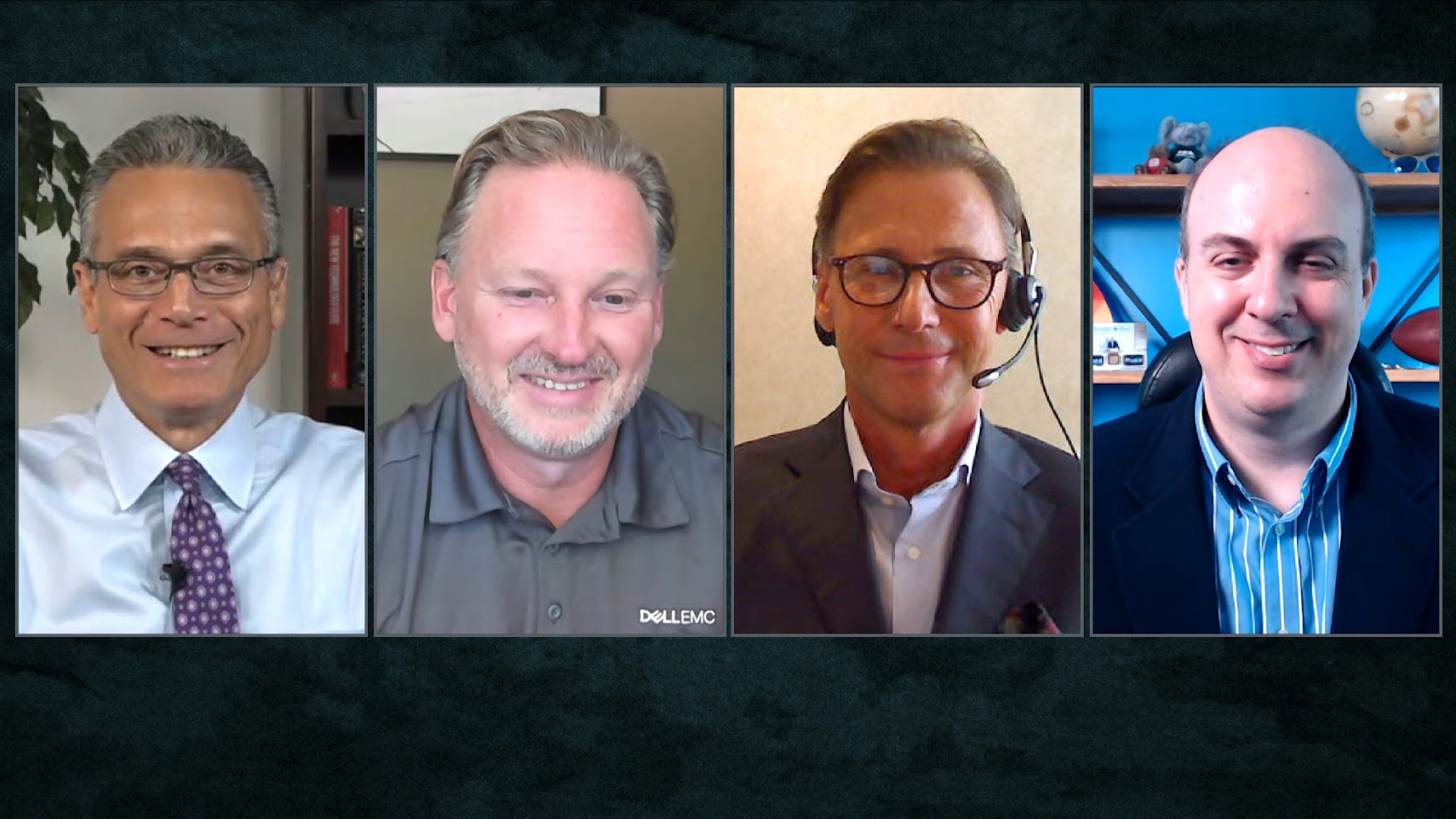 CLOUD
CLOUD
 CLOUD
CLOUD
 CLOUD
CLOUD
When Dell Technologies Inc. unveiled its autonomous infrastructure with Dell EMC PowerOne in November, the company’s release described a technology that sounded much like that of an autonomous car.
As with drivers of self-driving vehicles, system administrators need to only tell PowerOne the destination. Dell’s technology would calculate the best way to do everything else and ensure a safe user journey.
“It was all about automation,” said Trey Layton (pictured, second from left), senior vice president of converged infrastructure and software engineering and architecture at Dell. “We’re recognizing that we can deliver an architecture which has hyperconverged and converged attributes all in a single architecture and dial up the degrees of automation to create more adaptations for different types of application workloads.”
Layton spoke with Dave Vellante and Stu Miniman, co-hosts of theCUBE, SiliconANGLE Media’s livestreaming studio, in a discussion on the past, present and future of converged infrastructure. He was joined by Joakim Zetterblad (pictured, second from right), director of the SAP practice for EMEA at Dell. They discussed the need for new tools to manage complex networks, why the public cloud may not be the ultimate solution, the benefits of converged infrastructure for customers, and the value of an edge to core to cloud enterprise strategy. (* Disclosure below.)
The evolution from monolithic systems with just a few components to networks comprised of many complex elements has led Dell to add significant support to its autonomous PowerOne offering. In addition to PowerMax storage and PowerProtect secondary storage, PowerOne also uses Dell PowerEdge MX servers, PowerSwitch and SmartFabric networking.
“With the introduction of new internet of things technologies, there is a flow of information that requires a whole new set of infrastructure or tools to make these new processes happen,” Zetterblad said. “The focus at the end of the day is all on business outcome.”
Although Dell’s converged infrastructure solution is designed to ease the burden of systems management, enterprises have other options. Why not just put infrastructure into the public cloud and let it do the heavy lifting?
“We’ve seen some people that have a cloud-first strategy and often those are the same companies that are quickly doing what we call ‘repatriation,’” Miniman said. “Automation and APIs and everything in the Ops movement are not something that are only in the public cloud, but something that we should be embracing holistically. And this is where today’s and tomorrow’s converged infrastructure is going.”
Dell’s investment in its PowerOne technology speaks to an important factor in the evolution of converged infrastructure in the enterprise space: customers like the results.
“The underlying experience of converged infrastructure has remained relatively constant,” Layton said. “One of the data points that I love is 99% of our customers who buy converged infrastructure say they have virtually no downtime. That’s a great testament.”
Dell has been a partner with SAP SE for a number of years and has a portfolio of solutions to support SAP customer workloads. SAP HANA clients are relying on converged infrastructure to deal with transformational waves involving multicloud operating models and the introduction of intelligent technologies, according to Zetterblad.
“What converged infrastructure did so uniquely was provide that edge to core to cloud strategy, fully certified for both HANA and non-HANA workloads,” Zetterblad said. “That created huge momentum for converged in our SAP accounts.”
Evolution of the cloud and its accompanying complexity have driven enterprises toward automation models geared for taking away the headaches of managing a sprawling IT landscape.
“In the early days we talked about how cloud was supposed to be simple,” Miniman said. “If you look at deploying in the cloud today, it is not simple at all. We’ve seen great leaps and bounds in the last couple of generations of what’s happening in converged infrastructure to take advantage of automation because we know we’ve gone beyond what humans can just manage themselves.”
Watch the complete video interview below, and be sure to check out more of SiliconANGLE’s and theCUBE’s CUBE Conversations. (* Disclosure: Dell Technologies Inc. sponsored this segment of theCUBE. Neither Dell Technologies nor other sponsors have editorial control over content on theCUBE or SiliconANGLE.)
THANK YOU